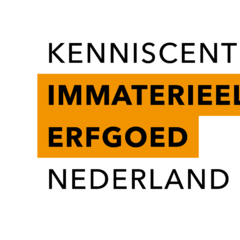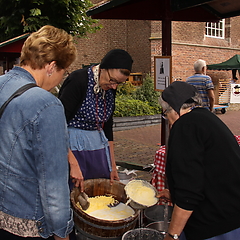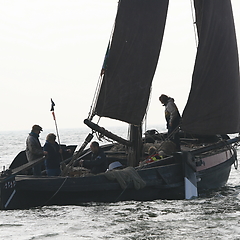Many elements of the traditional costume of Marken are decorated with embroidery. The various embroidery techniques are: the colourful free embroidery (called: the wild colours), Marken whitework, cut work, utterwork, cross stitch and akertjes. The colourful free embroidery is applied on corsets and middeltjes (waist corsets). There are woollen, daily corsets and middeltjes, decorated with woollen embroidery thread as well as silk ones, the Easter and bridal corsets, decorated with silk thread. White work is the name for embroidery with white, cotton threads on white, linen fabrics. For cut work horizontal threads are removed from linen fabric in a certain scheme. This causes long open lines that are decorated. The utter technique means that both horizontal and vertical threads are removed from the linen fabric. The raster that results is subsequently filled up with thin embroidery thread. The cross stitch can be divided into the black and the red and black cross stitch. For black cross stitch black embroidery thread is used. This was done on a strip of linen. These strips were worn under the hat by the women. The black embroidery is also applied on ornamental pillowcases and bedspreads. Black and red cross stitch is applied on elements of festive costumes, like neckbands and the tips of apron strings. Akertjes are small tassels that are attached to neckerchiefs.


